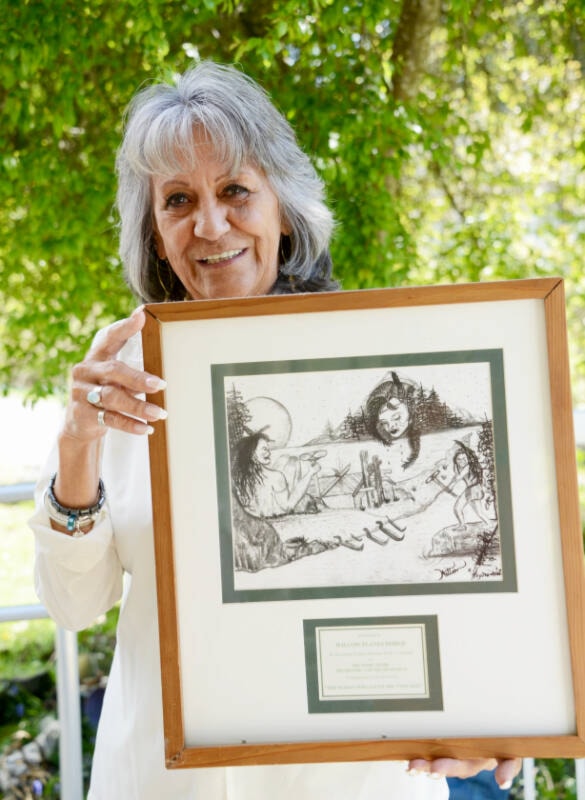Elida Peers | Contributed
Hoy-U-Wit, or as we generally know her, Willow Dodge Planes, is photographed here with the historic drawing she made decades ago. The scene illustrates the legend handed down through generations of her T’Sou-ke family, the massacre at Whiffin Spit.
Willow was given her traditional name not only by her parents, Frank and Bunny Planes but also by the band’s elders, named for the brave T’Sou-ke woman survivor who avenged the attack.
I heard this account many years ago from Willow’s grandmother, Ida Lazzar Planes.
MORE HISTORY: A retrospective of the Corner Property’s culinary odyssey
The T’Sou-kes were, as we know, much envied for their choice of sheltered location on the Strait of Juan de Fuca and needed to have a watchful guard at Whiffin Spit looking for unwelcome intruders.
Sadly, the story relates that a party of Clallams from across the strait caught them unaware and wiped out almost the entire community of T’Soukes.
Only a mother, Hoy-U-Wit, and her two sons escaped, finding refuge in a cave in the upland hills. While many of the victorious Clallams had returned across the strait, a group of their warriors were left behind at Whiffin Spit to guard the spoils of battle.
The T’Sou-ke mother, Hoy-U-Wit, laid plans with her sons to avenge the attack, agreeing to use the hoot of an owl as their signal to begin once they were in position.
In the dark of night, the trio planned, the elder son would swim across the inlet to reach a point across from where the narrow channel’s waves lapped at the spit’s tip. The mother and younger son would go to the base of the spit and wait for the signal.
When in place, the elder son hooted three times and then swam back to the tip of the spit, where he gave the planned long hoot of an owl; armed with clubs, the three crept stealthily from group to group, killing or maiming all but one.
It was the one remaining Clallam, the story says, that escaped and carried the tale back to his home territory. The T’Sou-kes, who had made the harbour their home, flourishing since time immemorial in the bountiful location, have never again regained the numbers of those earlier times.
Today, Hoy-U-Wit, together with husband Joe Dodge, lives on a sunny hillside not far from the narrow winding spit of land that endowed her with her name, a living testament to the resilience and endurance of her people.
•••
Elida Peers is the historian of the Sooke Region Museum. Email historian@sookeregionmuseum.com.
